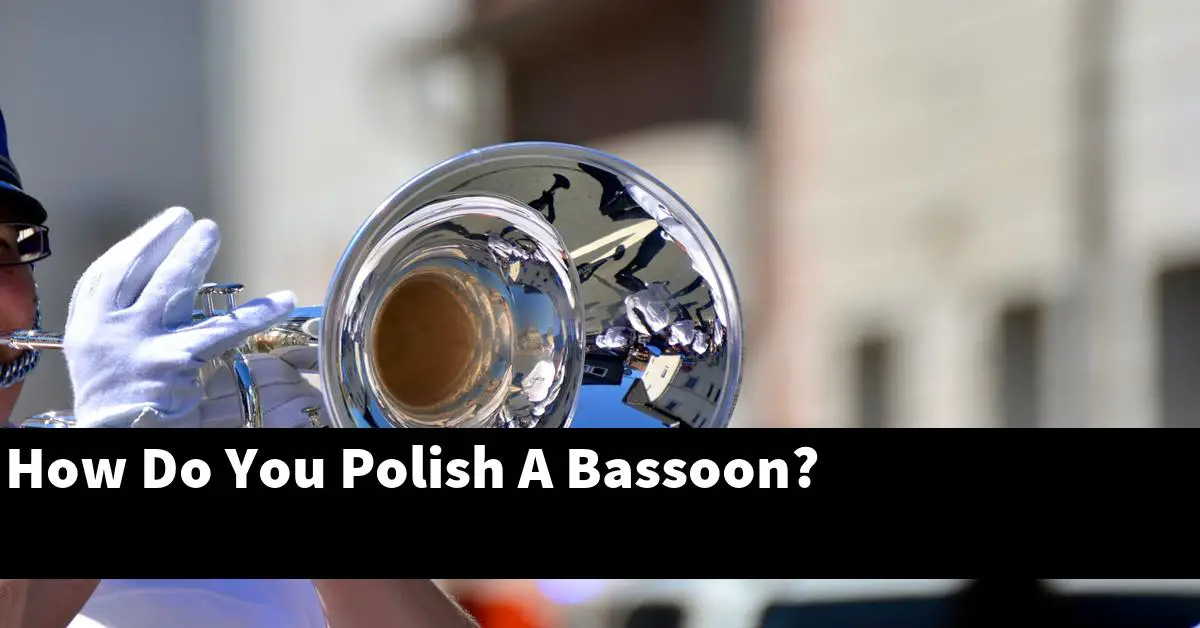Why spend hours polishing your bassoon when you can get a machine to do it for you?
The first step is to remove any rosin buildup on the bassoon with a polishing cloth. Next, use a soft, dry cloth to apply a small amount of furniture polish or beeswax to the body of the instrument. Finally, buff the bassoon with a clean, dry cloth to bring out the shine.
The article will be covering the different ways to polish a bassoon, as well as the different materials that can be used.
What is a bassoon?
The bassoon is a woodwind instrument that plays in the lower register. It has a long, thin body and a double-reed mouthpiece. The bassoon is a member of the woodwind family and is related to the oboe and the English horn. The bassoon is the bass voice of the woodwind family.
The bassoon is a difficult instrument to learn how to play. It takes a lot of practice and dedication to master the instrument. The bassoon is a versatile instrument and can be used in many different genres of music.
How is a bassoon made?
Bassoons are made from a variety of materials including wood, metal, and plastic. The most common material used for bassoons is wood, specifically grenadilla wood. Grenadilla is a hardwood that is native to Africa and is similar to ebony. This type of wood is used because it is dense and produces a clear, rich tone.
The body of the bassoon is made up of four sections: the boot, the bell, the wing, and the bore. The boot is the section of the bassoon that the player holds while playing. The bell is the flared end of the bassoon where the sound exits. The wing is the section of the bassoon that connects the boot and the bell. The bore is the inside of the bassoon where the air column vibrates.
The bassoon is held together with a system of metal keys and cork joints. The keys are made of brass and are connected to the bassoon using screws and posts. The cork joints are used to connect the different sections of the bassoon together. These joints are made of cork and are held together with a special type of glue.
The bassoon is a complex instrument that takes many years to master. However, the rewarding sound that it produces is worth the effort.
What are the parts of a bassoon?
The bassoon is a woodwind instrument that is a part of the double reed family. It consists of four main parts:
The bell, the boot, the body, and the bocal. The bell is the flared end of the bassoon and amplifies the sound of the instrument. The boot is the part of the bassoon that the player holds while playing.
The body of the bassoon is made up of several different sections: the upper joint, the lower joint, the wing joint, and the bocal. The bocal is the part of the bassoon that connects the reed to the body of the instrument.
How do you care for a bassoon?
The bassoon is a unique and delicate instrument, and proper care is essential to keeping it in good condition. Here are some tips on how to care for your bassoon:
- Always use a soft cloth or cleaning swab to wipe down the instrument after playing. This will remove any moisture or residue that could potentially damage the bassoon.
- Be careful when handling the bassoon, as it is a fragile instrument. Avoid dropping it or bumping it against hard surfaces.
- Be sure to store the bassoon in its case when not in use. This will protect it from damage and keep it clean.
- Have the bassoon regularly serviced by a qualified technician. This will ensure that the instrument is in good working condition and prevent any potential problems.
By following these simple tips, you can help keep your bassoon in good condition for many years to come.
How do you clean tarnished bassoons?
There are a few things you can do to clean a tarnished bassoon. You can use a soft cloth and a mild soap to clean the body of the instrument.
You can also use a toothbrush to clean the small crevices and hard-to-reach areas. If the tarnish is really bad, you can use brass polish to remove it. Be sure to follow the directions on the polish and test it on a small area first to make sure it doesn’t damage the finish on your bassoon.
What do you clean bassoons with?
To clean a bassoon, you will need a few supplies: a soft cloth, a small brush, and some cleaning solution. You can purchase a special bassoon cleaning kit that will have all of the supplies you need.
To start, you will want to use a soft cloth to wipe down the entire instrument, including the keys. Be sure to get in all of the nooks and crannies. Once the entire instrument is wiped down, you can use the small brush to get into any tight spaces.
Next, you will want to mix up some cleaning solutions. You can use warm water and mild soap, or you can purchase a special bassoon cleaning solution from a music store. Be sure to follow the directions on the cleaning solution bottle.
Once you have mixed up your cleaning solution, use it to soak a cloth and then wipe down the entire bassoon again. Be sure to rinse the bassoon off thoroughly with clean water when you are finished.
Once the bassoon is clean, you will want to dry it off completely. You can use a soft cloth or a bassoon swab. Be sure to get into all of the nooks and crannies so that the bassoon is completely dry.
Now your bassoon is clean and ready to play.
How do you deep clean a bassoon?
Assuming you would like a professional explanation on how to deep clean a bassoon:
The first step is to remove all of the parts of the bassoon. This includes the reed, the bocal, the bell, the crook, and the boot. Once all of the parts have been removed, you will need to clean the inside and outside of the bassoon with a soft cloth. Be sure to avoid using any harsh chemicals or cleaners on the bassoon.
Once the bassoon has been cleaned, you will need to swab the inside of the instrument. This will help remove any residual moisture or dirt that may be present. Be sure to use a clean swab for this process.
Once the bassoon has been cleaned and dried, you will need to reassemble all of the parts. Be sure to check that all of the parts are secure before you begin playing the instrument.
How often do you oil a bassoon?
The frequency with which you oil a bassoon depends on a number of factors, including the climate and the level of humidity. In general, it is a good idea to oil your bassoon once a week, although you may need to do it more frequently in dry or humid conditions.
Summary
If you’ve ever wondered how to polish a bassoon, wonder no more! In this blog post, we’ll show you step by step how to get your bassoon looking shiny and new in no time.
First, you’ll need some supplies. You’ll need a polishing cloth, a small brush, and some polishing compound. You can find all of these items at your local music store or online.
Next, you’ll want to start by dusting your bassoon with the polishing cloth. Be sure to get into all of the nooks and crannies! Once your bassoon is dust-free, you can start polishing with the compound. Apply a small amount to the polishing cloth and rub in a circular motion.
Continue polishing until you’re happy with the results. Then, use the small brush to dust off any excess compound. And that’s it! Your bassoon should now be gleaming.


